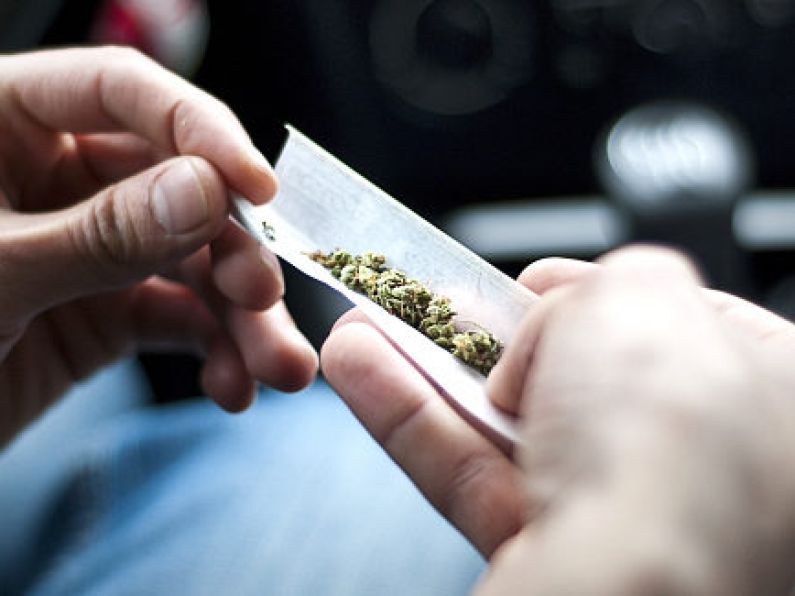The doubling in the potency of cannabis over the last ten years could be behind the growth in people seeking treatment for the drug, the European drugs agency has said.
While it said conclusions regarding the connection should be treated with “caution”, the European Monitoring Centre for Drugs and Drug Addiction said that adverse effects become “more severe” with higher doses of THC, which is the main active constituent of cannabis.
In their latest report on the European cannabis market, the Emcdda said it expected other forms of cannabis, such as cannabis jellies and other "edibles", will become more prevalent in Europe.
Local drug organisations and garda sources have identified the presence of cannabis jellies in Ireland.
The Emcdda warned that more potent cannabis "concentrates" had demonstrated a “marked increase” in the market in parts of the US and urged monitoring of the situation in Europe.
The report, Developments in the European cannabis market, said the potency of cannabis herb had doubled from 5% THC in 2006 to 10% THC in 2016.
It said that the potency of cannabis resin had “increased substantially” over the same period, from around 8% in 2006 to 17% in 2016.
The report said that THC can cause unwanted effects such as memory impairment, anxiety and paranoia.
“These adverse effects become more severe with higher doses of THC,” said the report.
Concentrations of THC in cannabis have risen in recent years, and evidence suggests that users only partially adapt to changes in THC.
It said: “As a result, people who use cannabis may have been exposed to rising doses of THC over time. These changes may have increased the level of adverse health effects related to cannabis use.”
The report said that there had been a 76% jump in the number of first-time admissions to drug treatment for cannabis problems between 2006 and 2017.
“It is possible therefore that an increase in the concentration of THC in cannabis is associated with this increase in admissions to treatment,” it said.
But it said this conclusion should be treated with “caution” as other factors could explain the increase.
These factors include a greater awareness of cannabis-related treatment needs, an overall increase in the level of provision and changes in referral practice.
Health Research Board figures show cannabis was the most common main problem drug in Ireland, representing 25% of all cases entering treatment in 2017, increasing to 39% among new cases.
In Ireland, the percentage of new cases involving cannabis has not increased since 2011, and has dropped marginally, from 41%.

The report said that CBD was the second most abundant cannabinoid after THC and that it had “shown promise” as a treatment for several medical conditions including epilepsy, psychosis and anxiety disorders.
It said CBD had been found to offset some of the harmful effects of THC.
It said there was some evidence to suggest the balance of THC to CBD ratios has been associated with a “greater risk of psychosis and dependence”.
In relation to other forms of cannabis, the report said that cannabis “concentrates” may be associated with “greater dependency and more mental health problems”.
Concentrated extracts of cannabis are obtained using heat and pressure or volatile solvents or gases, yielding high potencies of up to 80%, with minimal CBD, it said.
It said European data on cannabis concentrates were limited at present but that seizures in the US showed a “marked increase” in their presence.
It said it would be “wise” to specifically target cannabis concentrates in future European data collection systems.
The report said there was evidence that cannabis edibles, often packaged as jellies, form a “significant and growing part” of illicit cannabis markets.
It said it can be difficult to distinguish such edibles from other foodstuffs, sweets or drinks and that they were found to be responsible for 48% of paediatric emergency hospital visits involving cannabis in Colorado.
“On the basis of recent trends in the United States, it can be expected that the prevalence of edible products and cannabis concentrates might increase in Europe,” it said.
Cannabis jellies have been found in Ireland with some community drug projects and garda sources saying they have come across them.
Other forms of the drug include cannabis-based medicinal products and synthetic cannabinoids, the latter being typically “more potent”.
Emcdda director Alexis Goosdeel said: “The dynamic nature of the current cannabis market and the diversification of cannabis products available bring considerable challenges.
New and more potent cannabis products may have serious public health consequences for users. Therefore, monitoring and understanding new trends in cannabis products available to European consumers today is important to inform the policy and regulatory debate.”






